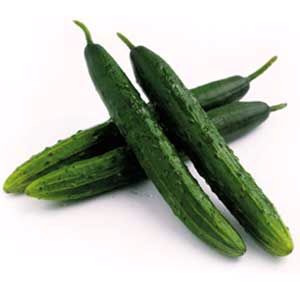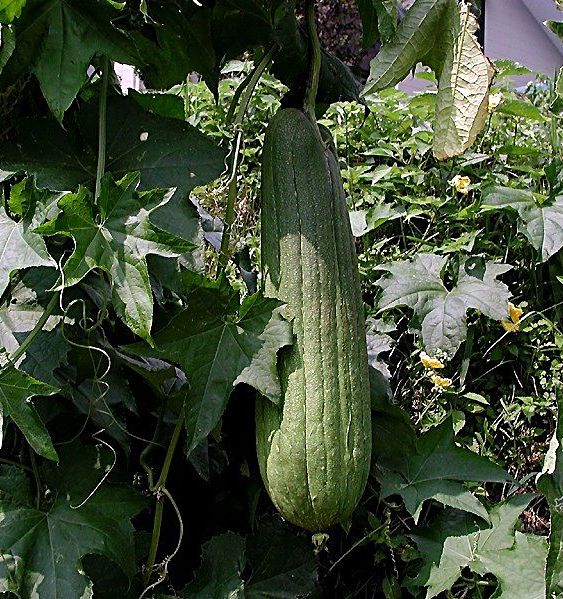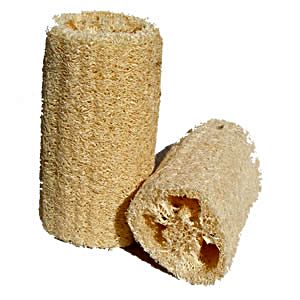 The luffa, loofah, or lufah (Luffa cylindrica) are tropical and subtropical climbing vines related to gourds and cucumbers, and sometimes called the “dishrag vine”, a reference to the sponge-like qualities of the dried fruit. The fruit of at least two species, Luffa acutangula and Luffa aegyptiaca , is grown, harvested before maturity, and eaten as a vegetable, popular in Asia and Africa. It is popularly known as Patola in the Philippines and used in various dishes. According to scientists, it contains calcium, iron and plenty of phosphorus.
The luffa, loofah, or lufah (Luffa cylindrica) are tropical and subtropical climbing vines related to gourds and cucumbers, and sometimes called the “dishrag vine”, a reference to the sponge-like qualities of the dried fruit. The fruit of at least two species, Luffa acutangula and Luffa aegyptiaca , is grown, harvested before maturity, and eaten as a vegetable, popular in Asia and Africa. It is popularly known as Patola in the Philippines and used in various dishes. According to scientists, it contains calcium, iron and plenty of phosphorus.
In appearance, a loofah looks like a cucumber. The attractive trailing vines of the plant will take over any available surface, yielding drooping green fruit in the summer. Loofah vines are often used to cover decaying fences or as privacy foliage, because they are dense and fast growing. Loofah prefers warm, dry climates, and is very sensitive to frost, generally not thriving outside of USDA Zone 10 unless gardeners sprout indoors and keep a close eye on their young loofah plants. The plants need to be watered regularly, but should not be allowed to become waterlogged.
Loofah is harvested for food in many parts of Asia. All species of loofah are edible, but they must be consumed before they mature, or they will be too woody and fibrous to eat. Loofah is cooked before eating, and is sometimes seen on menus as “Chinese okra.” When allowed to mature and dry on the vine, loofah can be harvested as a sponge. The woody exterior skin is peeled away, and the seeds shaken out for reseeding. The loofah sponge can be sold whole, or chopped into smaller and more manageable portions. Loofah can also be compressed for shipping. The net of straw colored fibers will puff up again if the loofah is moistened.
Like other sponges, loofah will collect bacteria if it is kept moist and warm, an environment common to bathrooms. For this reason, many people incorporating loofah into their beauty regimen prefer to use it as a dry exfoliating brush before bathing, or to grind it and use it in exfoliating scrubs. As a dry brush, loofah will gently remove the surface layer of dead skin, leaving the skin smooth and conditioned. Loofah can be used as a body sponge in the shower, but it should be allowed to dry out between uses. In the kitchen, loofah makes a great abrasive sponge for removing stubborn food particles from dishes and counter tops. Loofah is also gentle enough to use on delicate things like coated cookware which cannot withstand normal abrasives.
How to grow Patola
There are two kinds of Loofah or Patola:
- One is the many-sided which is inherently ours and the other is the cylindrical type which is called “patolang Kastila.”
- Our local version is the sweeter kind.

Planting
Patola is not difficult to grow, but it likes loose, sandy soil, fertile and does not lodge water. It may be planted at any time of year, but there are more flowers, and fruits are bigger when the weather is cool. Patola is planted two times a year: from March to May and from October to December. But if the fruits will be made into luffa, it is better to plant it in October-December so the harvest falls in summer. Ordinary patola is planted directly in the field; but if it is not in season, plant first in plastic bags (perforated at the bottom) and then latter transfer to the field when it will be needing trellises to climb on.
Land Preparation
- Plow the field and clean 2-3 times, with 7 days interval.
- Dig trenches 3 meters apart from each other.
- Plant the seed in the soil at 3 x 3 (or 2m) meters apart.
- Set bamboo poles or posts in rows about 3 meters long and 3 meters apart. Tie strings or wire from post to post about 3 weeks after germination of seeds. Patola will bear fruit even without trellis, but many fruits will turn out in bad shape.
- Patola needs watering. Dig canal for irrigation about 1½ meters from the plant or between trenches.
Fertilizer
Apply composting animal manure.
Harvesting
About 3-4 months after planting, or 45-50 days after flowering, patola can be harvested. A hectare of patola can yield about 10,000 pieces or more, depending on how well the plants have been maintained.

Manner of Preparing LUFFA (Body Scrub):
- Let the patola grow mature before harvesting.
- Remove the peel and shake off the seeds. It could be easier to clean this by boiling first, but this will diminish the coarseness for rubbing.
- Dry in the sun for two days (in Summer) or 4-5 days in rainy weather. It can also be dried in the oven but the quality is inferior to that which is sun dried. Its whiteness is less.
- Wash to clean and soften. Bleach to make it white.
- Dry in the sun again 3-5 days. Now, the patola becomes wider, softer, and milk colored.
- Cut into desired sizes (according to customers taste).
- Seal in plastic bag
Source : www.elgu2.ncc.gov.ph; Photos: en.wikipedia.org and bathplantation.com